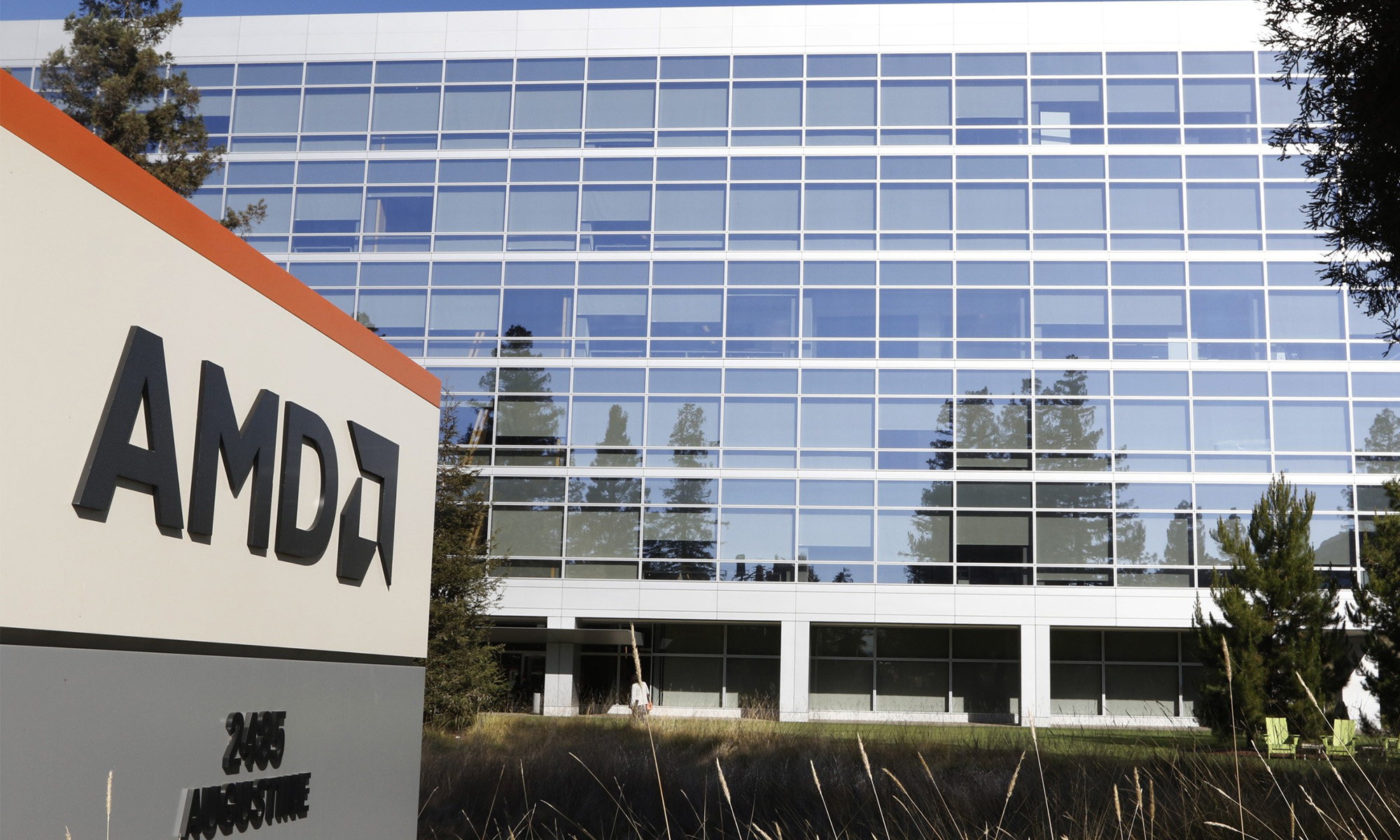Advanced Micro Devices (AMD 2.08%) gave Intel (INTC +6.47%) a run for its money in the processor market last year. AMD shook Chipzilla's dominance in both the server and CPU (central processing unit) markets thanks to its superior manufacturing process, which allowed the former to churn out powerful chips at competitive prices.
AMD's share of the desktop CPU market went up to 18% in the third quarter of 2019 from 13% in the prior-year period, according to Mercury Research. Its share of mobile CPUs (used in laptops and notebooks) increased to 14.7% by the end of the third quarter, up from 10.9% in the year-ago period.
What's more, PC CPU benchmarking website PassMark reports that AMD's CPU market share is now at 34.3% thanks to its 7-nanometer (nm) manufacturing process. However, PassMark's estimate has several limitations. It tabulates data from only those PCs that have installed its benchmarking software, and it is only available for the Windows operating system.

Image source: Getty Images.
Reading between the lines
Despite its limitations, PassMark's data makes it clear that AMD's market share growth accelerated over the past year as the launch of the 7 nm-based Ryzen 3000 CPUs in July 2019 changed the game. While Intel was struggling with a chip shortage and consistent delays in moving to the competing 10 nm manufacturing process, AMD took advantage to gain market share. This year, AMD has the chance drive its advantage further and take away a large chunk of Intel's market share thanks to Apple (AAPL 0.83%).
The iPhone maker is reportedly moving to a 5 nm manufacturing process for this year's A14 chip. As a result, Apple foundry partner TSMC will be left with a surplus 7 nm capacity that AMD could take up. Hong Kong-based newspaper Apple Daily reports that once TSMC starts producing 5 nm chips for Apple in the second half of 2020, the 7nm capacity will jump to 140,000 wafer starts a month.
The Apple Daily report adds that AMD's 7 nm orders from TSMC will double as a result of Apple's move, with the chipmaker accounting for 21% of the foundry's total 7 nm capacity. This would clear the path for AMD to capture a bigger share of the CPU market this year as Intel continues to remain behind the curve thanks to its supply woes.
The 7 nm advantage and Intel's shortcomings will give AMD a boost
The problem with Intel is that it has been stuck with its 14 nm production process as its move to the 10 nm process has been plagued by bottlenecks. So when AMD moved to a superior 7 nm process last year, it wasn't surprising to see its CPU market share increase. After all, chips made on a smaller manufacturing process are more power-efficient without compromising on performance.
They are also less costly to manufacture, which is why AMD has been able to price its 7 nm Ryzen chips at levels that have hurt Intel. Looking ahead, Chipzilla finally plans to bring out its 10 nm Ice Lake chips (equivalent to chips built with AMD's 7 nm process) in the second half of 2020 (assuming there are no further delays). Until that time, AMD will continue to enjoy a technological advantage.
Another problem for Intel is that it cannot make enough 14 nm chips. The problem has been so acute that Chipzilla was forced to reboot a 6-year-old CPU last month based on the 22 nm manufacturing process. Not surprisingly, Intel customers are deciding to switch to AMD -- a trend that might continue in light of the points discussed above.
This paves the way for AMD stock to sustain its terrific growth momentum in 2020.







